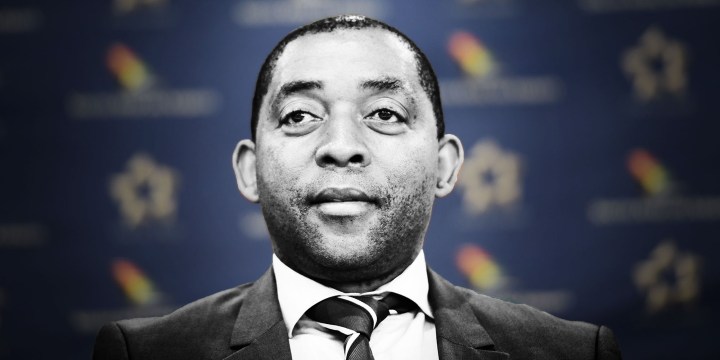BUSINESS MAVERICK ANALYSIS
SAA: Time for a Business Unusual approach

News of the resignation of SAA CEO Vuyani Jarana has aroused a binary response: If a private sector CEO with the credibility of Jarana cannot turn the airline around, then SAA is a basket case that must be placed into business rescue or sold. Alternatively, the narrative goes that Jarana’s departure is directly linked to Public Enterprises Minister Pravin Gordhan, who interferes and micro-manages, but denies crucial support when needed. The truth, as usual, is likely to be far more nuanced.
The most curious thing about the departure of Vuyani Jarana as CEO of SAA is that the board accepted the notice of a man whose resignation letter was so eloquent that everyone reading it was grateful they were not in his shoes.
It is even more curious given the fact that the turnaround plan was apparently gaining some traction. Where SAA reported a R5.2-billion loss in 2017/2018, it is projecting a R1.9-billion loss in the current financial year, with profitability projected for 2020/2021. (Although it’s rumoured that the carrier’s financial statements will be released late – again – which does not inspire confidence.)
There is no reason to doubt that Jarana, despite having no aviation experience, was adequately equipped to run an enterprise the size of SAA. However, was he equipped to run a public enterprise of the same scale?
The two are different and Jarana did not appreciate this fact. For one, he intensely disliked having to appear before Parliament and account for SAA’s performance.
In addition, he walked into an organisation that between 2009 and 2017 was run as the personal fiefdom of former chair Dudu Myeni. Many of her henchmen and -women remain in the enterprise and are resistant to any form of change, causing him grey hair and huge frustration.
The rot still runs deep and Jarana should have been alert to this reality. Perhaps he drank the Kool-Aid fed to him by former public enterprises minister Malusi Gigaba, who appointed him to turn around the airline.
In addition, Jarana did not fully appreciate the roles that the shareholder and the board of a public entity play and arguably was not equipped with the special blend of competencies, knowledge and emotional resilience required to navigate this difficult environment. In his defence, who is?
Finance was another vexed issue. Leaving aside the issue of debt and SAA’s recapitalisation for a moment, Jarana was frustrated by the time it took to get financial decisions approved. The Public Finance Management Act, it is claimed, is not onerous, but it is if you are used to acting on decisions first and ratifying them at board-level later – as Anoj Singh did while CFO at Transnet and Eskom.
While the Act is designed to be easy to use, it is also the thin line between responsible financial management of taxpayer monies and outright looting and any CEO of a state company needs to appreciate that.
But on the subject of the financing of SAA, again one can understand Jarana’s frustrations. A CEO who spends most of his or her productive time simply keeping the lights switched on is a monumental waste of a talented and expensive resource.
And this is where the government, too, should take stock, because responsibility is a two-way street.
The government – well, the Department of Public Enterprises – has repeatedly stressed that it backs the turnaround plan, that SAA will not be allowed to fail and that it supports a partnership of some form with the private sector once SAA is stable. Yet it is far from clear that there is unity in policy and purpose across all stakeholder groups. Remember a frustrated Tito Mboweni who said, somewhat inelegantly, “sell the thing”.
However, if SAA is to succeed this is imperative. It is the one ingredient that underpins successful aviation strategies around the globe, regardless of who is executing the strategy. Emirates and Ethiopian Airlines are obvious examples.
So where to now for the SAA board?
Assuming Jarana will not be persuaded to stay because this is not the first time he has threatened resignation, the board needs to find a replacement. This time the individual should have both aviation and public sector experience. Once this is done the shareholder needs to reconfirm SAA’s strategy and its implications, and then create a framework for expedited and focused implementation, perhaps recognising that a business unusual approach is required, without compromising oversight.
Time is of the essence because once passengers and agents start to lose faith in an airline, they cancel bookings and don’t make new ones; suppliers start to demand payments upfront and soon the carrier is facing a death spiral. DM




















 Become an Insider
Become an Insider